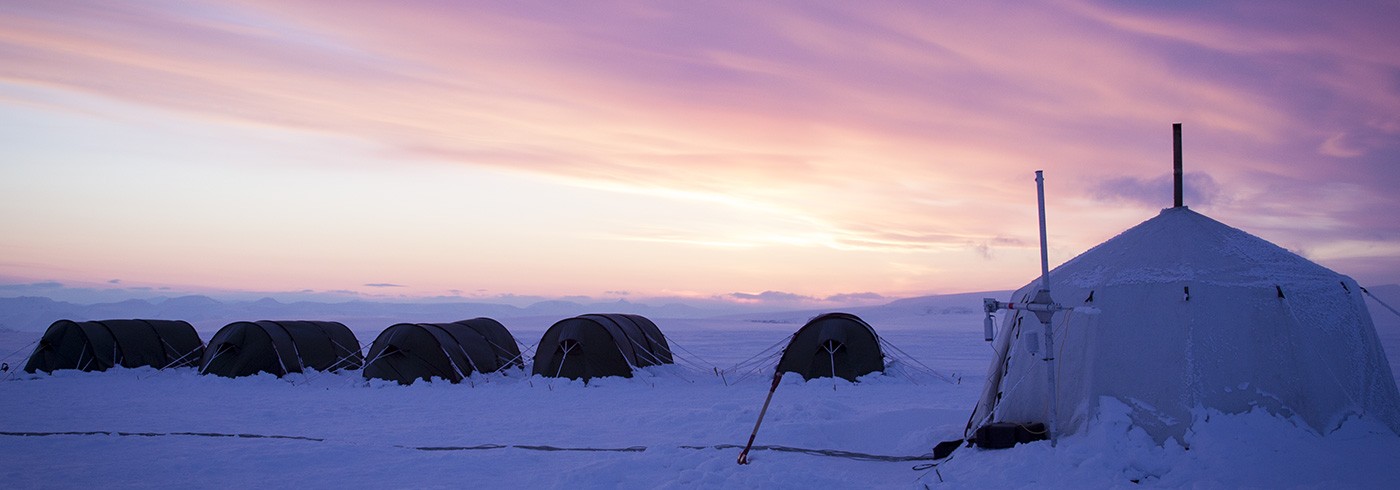Mass flux through Nordenskiöldbreen on Svalbard
27 March 2014 - 8 April 2014
Post-graduate student Rickard Pettersson and doctoral candidate Dorothée Vallot at Camp Lomonosovfonna. This is where we stayed during the spring campaign, and also the place of work which involved; filming firn stratigraphy, installing thermistors, and collecting ice cores. Photo: Veijo Pohjola

Drilling holes for shooting video and installation thermistor coils for logging firn and snow temperatures. Photo: Veijo Pohjola
We studied mass fluxes through the 25-km-long Nordenskiöldbreen glacier that debouches from the Lomonosovfonna ice cap on the island of Spitsbergen. The underlying question we addressed is how Arctic warming is affecting the ice system in this region.
Satellite-borne altimetry has indicated that this region of Svalbard has a lower rate of mass loss than the south-western parts of the archipelago. Only a small number of measurement series extending back more than a few years are available from the north-eastern parts of Svalbard. We have been conducting measurement campaigns and monitoring data for Nordenskiöldbreen since 1997 and now have a valuable series. Our data derive mainly from weather and snow-pack stations as well as from continuous GPS measurements of ice velocity, ground penetrating radar campaigns, and ice core analyses. Our extended activity in the region has resulted in a series of publications. We now seek to determine how estimates of incoming mass can be better balanced in our ice-flow and energy-balance models. This effort is part of the Nordic Centre of Excellence (NCoE) Stability and Variations of Arctic Land Ice (SVALI) programme.








